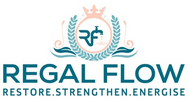
Is Reverse Osmosis Water Safe to Drink?
Wondering if reverse osmosis water is safe to drink? Short answer: yes! RO systems and countertop dispensers deliver clean, purified water free from harmful contaminants. It's a smart, healthy choice for your home. Discover why in Reverse Osmosis: The Ultimate Guide to Water Purification—your go-to for crystal-clear answers.
The Purification Process of Reverse Osmosis
Reverse osmosis (RO) is one of the most efficient ways to clean your water. It works like this: water is forced through a semi-permeable membrane that filters out contaminants, leaving you with water that’s nearly free of harmful substances. Think of it as a mini water purifier that traps the bad stuff – chlorine, lead, fluoride, and even some microbes – while letting pure water flow through. This process isn’t new. In fact, reverse osmosis technology has been used for years in everything from seawater desalination to producing the highest-quality drinking water. Whether you’re in the kitchen or using a countertop dispenser, the result is the same – clean, fresh water.
What Contaminants Does RO Effectively Remove?
RO systems are incredibly effective at removing a wide variety of contaminants, which makes them a popular choice for households concerned about water quality. Here's a quick rundown of what gets filtered out:
-
Chlorine & Chloramine – Often used in tap water to disinfect, these chemicals can give your water an unpleasant taste and smell. RO removes them completely.
-
Fluoride – While some people opt for fluoride in their drinking water, others may want to avoid it. RO systems take care of that as well.
-
Lead & Heavy Metals – Lead pipes in older homes can leach harmful metals into your drinking water. RO is excellent at removing these dangerous substances.
-
Nitrates – Found in fertilisers, nitrates can seep into groundwater and contaminate water supplies. RO effectively removes them too.
-
Microorganisms & Sediment – Bacteria, viruses, and sediment are all filtered out through the RO process, leaving only pure water behind.
The Resulting Purity of RO Water
What you end up with after an RO filter is clean, almost pure water – without the chemicals, metals, or other nasties you might find in your tap water. The process removes 90-99% of contaminants, making your water significantly cleaner and safer to drink. However, this level of purity also means that RO water lacks some of the minerals naturally found in tap water, which brings us to the next point.
Benefits of Drinking Reverse Osmosis Water
When it comes to drinking water, RO has several key benefits, particularly for those concerned about what might be lurking in their tap water.
Removal of Harmful Contaminants
One of the major benefits of RO water is its ability to remove harmful contaminants. Whether it's chemicals, heavy metals, or microbes, RO systems offer peace of mind knowing your drinking water is free from substances that could impact your health. For example, if you live in an area where the water has been contaminated with lead or excessive fluoride, switching to RO water can be a game-changer.
Improved Taste and Odour
Let’s be honest – no one likes water that tastes like chlorine or smells like chemicals. RO water solves this problem by removing chlorine, chloramine, and other odour-causing contaminants. The result? Fresh-tasting, neutral-smelling water that’s perfect for sipping, cooking, and even brewing your morning tea.
Suitable for Individuals with Specific Sensitivities
If you or someone in your household has specific sensitivities or health conditions, RO water might be the best choice. For example, people with weakened immune systems – such as the elderly, young children, or those with certain health issues – often need water that’s free from harmful contaminants. With RO systems, they can safely drink water without worrying about bacteria, viruses, or harmful chemicals.
Potential Concerns About Drinking RO Water
While RO water offers many benefits, there are a few concerns you might hear about, and it’s good to consider them before making the switch.
Removal of Beneficial Minerals
One of the most common concerns people have with RO water is that it removes beneficial minerals like calcium and magnesium. It’s true that RO water is very pure and lacks these minerals, but here’s the catch: the amount of minerals you get from drinking water is relatively small. Most people get the majority of their minerals from food – not water.
Slightly Acidic pH
Another potential downside is that RO water tends to have a slightly acidic pH. This happens because the filtration process removes minerals that help balance the pH of water. However, this level of acidity is generally not harmful to your health, and you’d need to drink a lot of RO water over a long period for it to make any noticeable difference.
The Importance of a Balanced Diet
As we mentioned, most people get their minerals from food, not water. A well-balanced diet should provide all the essential nutrients your body needs, so even if your water is low in minerals, you’re still covered. If you’re particularly concerned, there are ways to remineralise RO water, which we’ll cover shortly.
Addressing the Mineral Loss in RO Water
If you’re still feeling a little uneasy about the mineral loss in RO water, don’t worry – there are options.
The Role of Dietary Intake
The main source of minerals for your body is your diet. Foods like leafy greens, dairy, nuts, seeds, and fish provide essential minerals that you need for your overall health. So, unless you’re drinking water to meet your entire mineral requirement (which isn’t the case for most people), you don’t need to stress about the lack of minerals in RO water.
Remineralisation Options for RO Systems
If you’re keen to get some of those minerals back into your water, you can easily address this with a remineralisation filter. Many RO systems come with an additional stage to add beneficial minerals back into the water, restoring that natural taste and adding a health boost. Alternatively, there are mineral drops you can add to your RO water for a similar effect.
Comparing RO Water to Other Types of Drinking Water
So, how does RO water stack up against other common types of drinking water? Let’s take a look.
Tap Water
Tap water is the most convenient option for most households, but it can come with a variety of contaminants, such as chlorine, fluoride, and heavy metals. While local councils regulate tap water, they can’t always guarantee it’s free from all harmful substances. RO water is a much cleaner option for those who are concerned about these contaminants.
Bottled Water
Bottled water might seem like a good alternative, but it comes with its own set of issues. While it’s convenient, bottled water can be more expensive, and there’s always the risk of microplastics leaching into the water from the bottles. Plus, the mineral content can vary depending on the brand. RO water is a more consistent, cost-effective, and eco-friendly choice.
Other Filtered Water
There are plenty of other filtered water options out there, from pitcher filters to countertop filters. While these systems can remove some contaminants, they often don’t work as thoroughly as RO systems. If you’re looking for the highest level of purification, RO is the way to go.
Conclusion: Making an Informed Decision About Drinking RO Water
So, is reverse osmosis water safe to drink? Absolutely. RO water is one of the safest, most reliable ways to get clean, fresh-tasting water in your home. While it removes some minerals, a balanced diet will ensure you’re still getting everything you need. Plus, if you prefer mineral-rich water, there are simple ways to add those minerals back in. If you’re looking for a water filtration solution that removes harmful contaminants and offers peace of mind, RO is a great choice.
More Reverse Osmosis info we think you'll love
Reverse Osmosis Advantages and Disadvantages
Reverse Osmosis in Wastewater Treatment
Reverse Osmosis vs Bottled Water
Reverse Osmosis vs Water Softener
Reverse Osmosis vs Alkaline Water
Can Reverse Osmosis Remove Fluoride?


Leave a comment